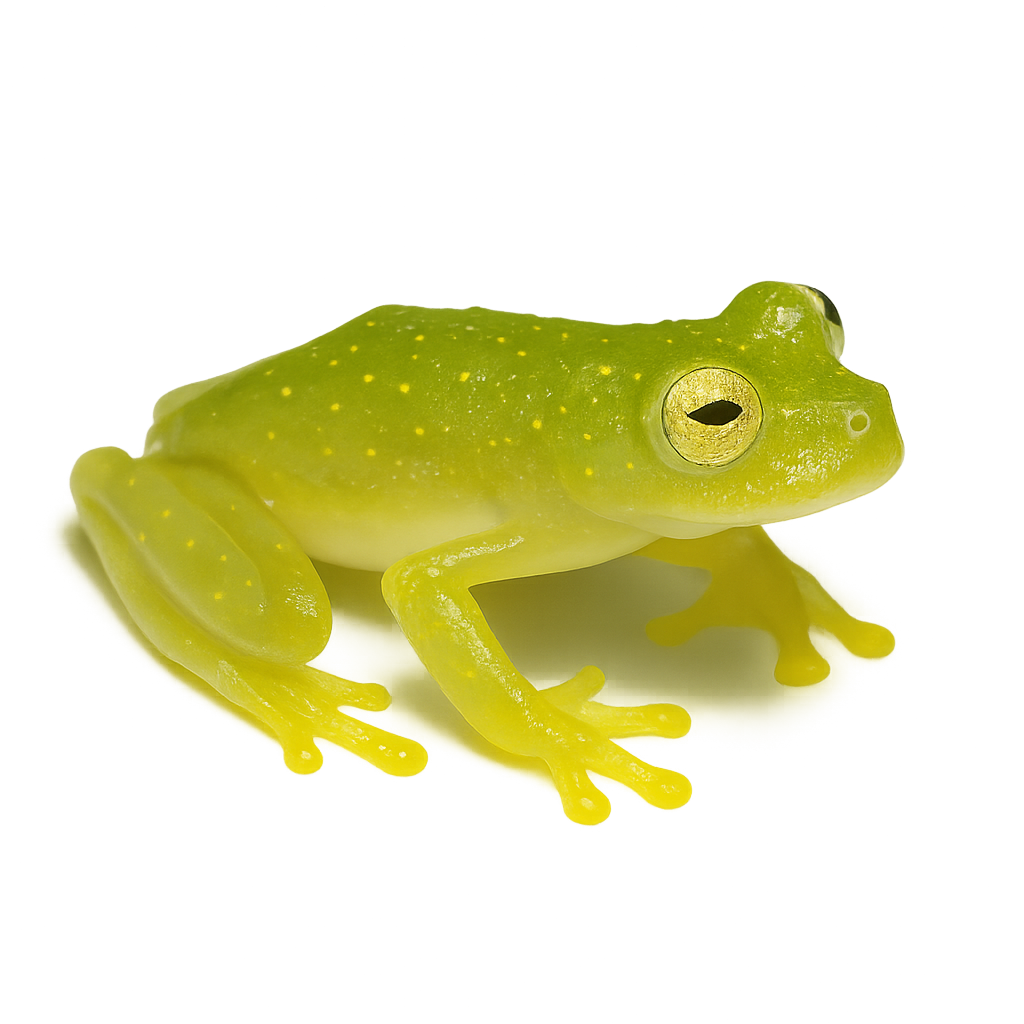Your wildlife photography guide.
Explore the green glass frog in detail, study its behavior, prepare your shots.
Where to observe and photograph the green glass frog in the wild
Learn where and when to spot the green glass frog in the wild, how to identify the species based on distinctive features, and what natural environments it inhabits. The WildlifePhotographer app offers tailored photography tips that reflect the green glass frog’s behavior, helping you capture better wildlife images. Explore the full species profile for key information including description, habitat, active periods, and approach techniques.
Green glass frog
Scientific name: Hyalinobatrachium colymbiphyllum

IUCN Status: Least Concern
Family: CENTROLENIDAE
Group: Amphibians
Sensitivity to human approach: Somewhat shy
Minimum approach distance: 5 m
Reproduction period: March to October
Incubation: 20 a 25 días
Births: March to October
Habitat:
Humid tropical forests, riverbanks, and streams
Activity period :
Mainly active at night, generally discreet during the day.
Identification and description:
The Glass Frog is a fascinating species of amphibian, known for its translucent skin that allows its internal organs to be visible. It typically measures between 2 and 3 cm long and is commonly found on leaves hanging above streams in the tropical rainforests of Central and South America. Its transparent skin serves as an excellent camouflage, helping it blend seamlessly into its environment. This frog’s ability to blend with the vegetation, combined with its small size, makes it hard to spot. Its eggs are laid on leaves above water, and the tadpoles fall into the water once they hatch. This species is nocturnal and somewhat shy, preferring to avoid human interaction.
Recommended lens:
Macro – adjust based on distance, desired framing (portrait or habitat), and approach conditions.
Photography tips:
Photograph the Glass Frog using soft lighting, preferably at night, to capture its translucent colors without disturbing it. Be discreet and avoid getting too close, as it could disturb the animal. Use a macro lens to capture the details of its internal organs visible through its skin while respecting its natural habitat. Never disturb its eggs or breeding area. Try capturing the camouflage effect by shooting with a shallow depth of field to isolate the subject while blurring the background.
The WildlifePhotographer App is coming soon!
Be the first to explore the best nature spots, track rutting seasons, log your observations, and observe more wildlife.
Already 1 431 wildlife lovers subscribed worldwide

